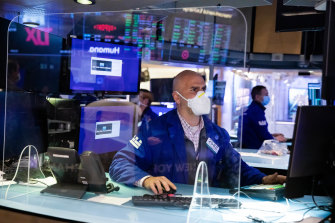The personal consumption expenditures price index, the Fed’s preferred gauge, rose 6.6 per cent in the year through March, more than triple the central bank’s goal — and anger at price pressures among Americans is hammering the approval ratings of President Joe Biden, dimming the prospects for his Democrats in November mid-term congressional elections.
A growing number of critics say the central bank waited too long to be able to stamp out inflation without causing a recession. Powell himself even told Congress in early March: “Hindsight says we should have moved earlier.”
Investors had been increasingly betting the FOMC will opt for an even bigger rate increase, of three quarters of a percentage point, when it next meets in June — which would be the largest single hike since 1994. While officials have so far downplayed that idea, several have in recent weeks expressed a desire to “expeditiously” bring the federal funds rate to around 2.5 per cent by the end of the year, a level they deem roughly “neutral” for the US economy.

Wall Street rallied as Powell downplayed talk of bigger rate rises ahead.Credit:Bloomberg
The statement repeated prior language that said, “with appropriate firming in the stance of monetary policy, the committee expects inflation to return to its 2 per cent objective and the labor market to remain strong.” In addition, it reiterated that the Fed “anticipates that ongoing increases in the target range will be appropriate.”
Officials decided to begin shrinking the Fed’s $US8.9 trillion balance sheet starting June 1, at a pace of $US30 billion in Treasuries and $US17.5 billion in mortgage-backed securities a month, stepping up over three months to $US60 billion and $US35 billion, respectively. The balance sheet had ballooned in size as the Fed aggressively bought securities to calm panic in financial markets and keep borrowing costs low as the pandemic spread.
The Fed said Wednesday that “to ensure a smooth transition, the committee intends to slow and then stop the decline in the size of the balance sheet when reserve balances are somewhat above the level it judges to be consistent with ample reserves.”
Loading
Powell told Congress in early March the process would take about three years, implying some $US3 trillion in reductions.
Market expectations for a series of interest-rate increases have already pushed up borrowing costs and begun to constrain demand in rate-sensitive industries such as the housing market. The yield on the benchmark 10-year Treasury note rose to 3 per cent this week for the first time since 2018.
Powell and his colleagues have increasingly sought to connect high inflation to strength in the US labor market. The US unemployment rate in March was 3.6 per cent, just above its pre-pandemic level. The Labor Department will publish figures for April on Friday.
Officials must also calibrate the fallout from Russia’s invasion of Ukraine, which has pushed up energy and food prices, even as COVID lockdowns in China add fresh strain to supply chains and downside risks to global growth.
Bloomberg
The Business Briefing newsletter delivers major stories, exclusive coverage and expert opinion. Sign up to get it every weekday morning.








